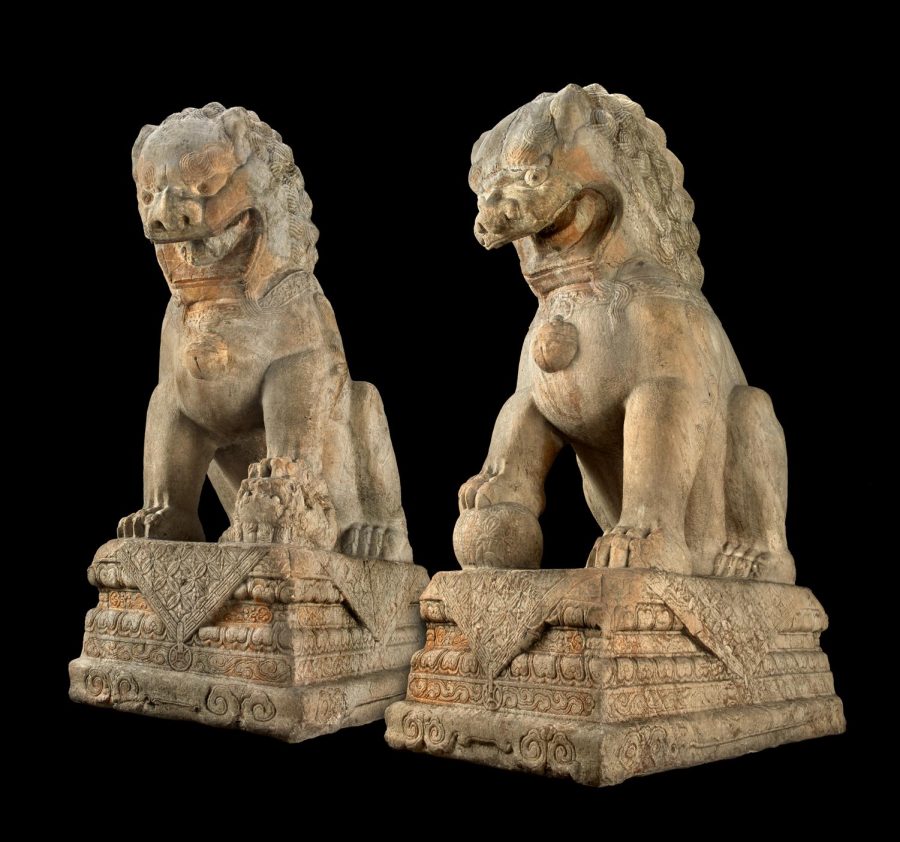Cyrus Tang Hall of China joins Field Museum
June 25, 2015
Two ancient Chinese stone lions stand tall, gazing intently down at approaching visitors. One lion’s paw rests upon a decorated ball, symbolizing power, while the other uses its paw to cradle a lion cub.
Traditionally believed to possess attributes of protection and strength, the statues once stood guard outside imperial buildings, temples and wealthy homes in China. Thousands of years later, they now guard the Field Museum’s latest permanent exhibition.
Displaying 350 Chinese artifacts from The Field’s collection of more than 33,000 objects, “Cyrus Tang Hall of China” opened on June 24 and will walk visitors through Chinese history spanning the period before the Neolithic Era through present day, according to Richard Lariviere, president and CEO of the Field Museum.
“The museum has drawn upon our collection of archeological, historical and ethnographic objects from China, including Neolithic pottery, jades, Shang and Zhou dynasty bronzes, Han and Qing dynasty burial objects [and] sculptures from multiple periods as well as rubbings, textiles and paintings,” Lariviere said. “Inside, you’ll discover [artifacts] carefully chosen from our best objects presented with stories from the people who made and used them.”
The exhibition is housed in five galleries, each with a different focus on Chinese history, and explores three central themes that occur throughout the country’s past: “There is no one China,” “Constant change and strong continuity define the history of Chinese culture” and “Each object in the exhibition has multiple stories to tell.”
The exhibition opens in the “Diverse Landscapes, Diverse Ways of Life” gallery, highlighting the theme that there is “no one China.”
Through topographical maps, dioramas depicting early Chinese societies and various jade artifacts, the gallery depicts the variety among China’s different regions and societies.
Digital railings containing textual information, images, videos and 360-degree views of artifacts accompany each showcase, engaging visitors in an interactive tour of the exhibition, according to Gary Feinman, curator of Mesoamerican, Central American and East Asian Anthropology at the museum.
“The digital rails convey a lot more information that normally would not be possible in a standard exhibition,” Feinman said. “This means you can walk through and see the artifacts relatively uncluttered by text, but at the same time if you have a deep interest you can dive into the material through the interactive rails.”
The second gallery, “Ritual and Power, War and Unification,” displays bronze vessels and other objects depicting themes of warfare and trade among early Chinese states during the Bronze Age.
It also contains an animated map of China’s dynasties demonstrating how Chinese boundaries shifted throughout history during different periods of political unification and fragmentation.
Located in the exhibition’s third gallery, “Shifting Power, Enduring Traditions,” is the Puppet Theater Media Experience, a video presentation of the popular Chinese epic “Journey to the West,” which was told throughout centuries using shadow puppet shows.
Other pieces in the gallery include artifacts from ancient Chinese scholars, scrolls and statues that highlight Chinese traditions that survived despite many changes in political structures and social codes between the Han and Qing dynasties.
“Crossing Boundaries, Building Networks” showcases model representations of ships and objects collected from shipwrecks in the fourth gallery. It also highlights artifacts that depict early China’s relationships with neighboring countries in terms of exchanging people, ideas and goods.
Through studying the artifacts excavated from the Java Sea Shipwreck, which took place off the coast of Indonesia between the 12th and 13th centuries, visitors can learn about the types of goods that were traded and the relationships early China had with other nations.
The exhibition closes in the “East Garden” gallery, which uses classic Chinese aesthetics and spirit stones to mimic a traditional Chinese rock garden.
With windows offering views of Lake Michigan, the gallery provides a peaceful environment for visitors to relax after viewing the entire exhibition.
“Cyrus Tang Hall of China,” which was named after the American philanthropist who helped create the exhibit, will be the only permanent exhibition in the United States to examine Chinese culture and history from an anthropological viewpoint, according to Lisa Niziolek, the “Cyrus Tang Hall of China” postdoctoral fellow. The exhibition is unique because it examines Chinese history through the development of its culture and societies, she said.
“We’re really trying to understand why things happened and what the nature of human interactions were [throughout] Chinese history,” Niziolek said. “That’s very unique in terms of displaying Chinese artifacts. We are the only exhibition in the United States to take this anthropological approach.”
Access to the exhibit is included in the Field’s Discovery ($25 for adults and $20 for students) and All-Access ($31 for adults and $25 for students) passes.








